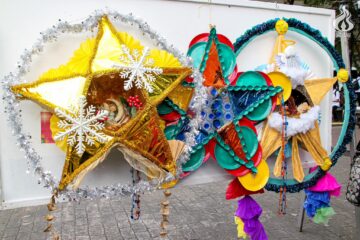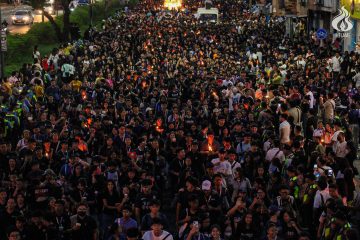by THEA ANDREA MAGUERIANO and JOHN PATRICK MAGNO RANARA

In collaboration with the National Museum of the Philippines, the embassy of Mexico in the Philippines presented Dia de los Muertos at the National Museum of Fine Arts from Nov. 5 to 17.

The exhibition showcased the traditional Mexican Ofrenda where a collection of symbolic objects is on ritual display during the celebration of Día de los Muertos. The expo also showed photo exhibits and ink on silk artworks.
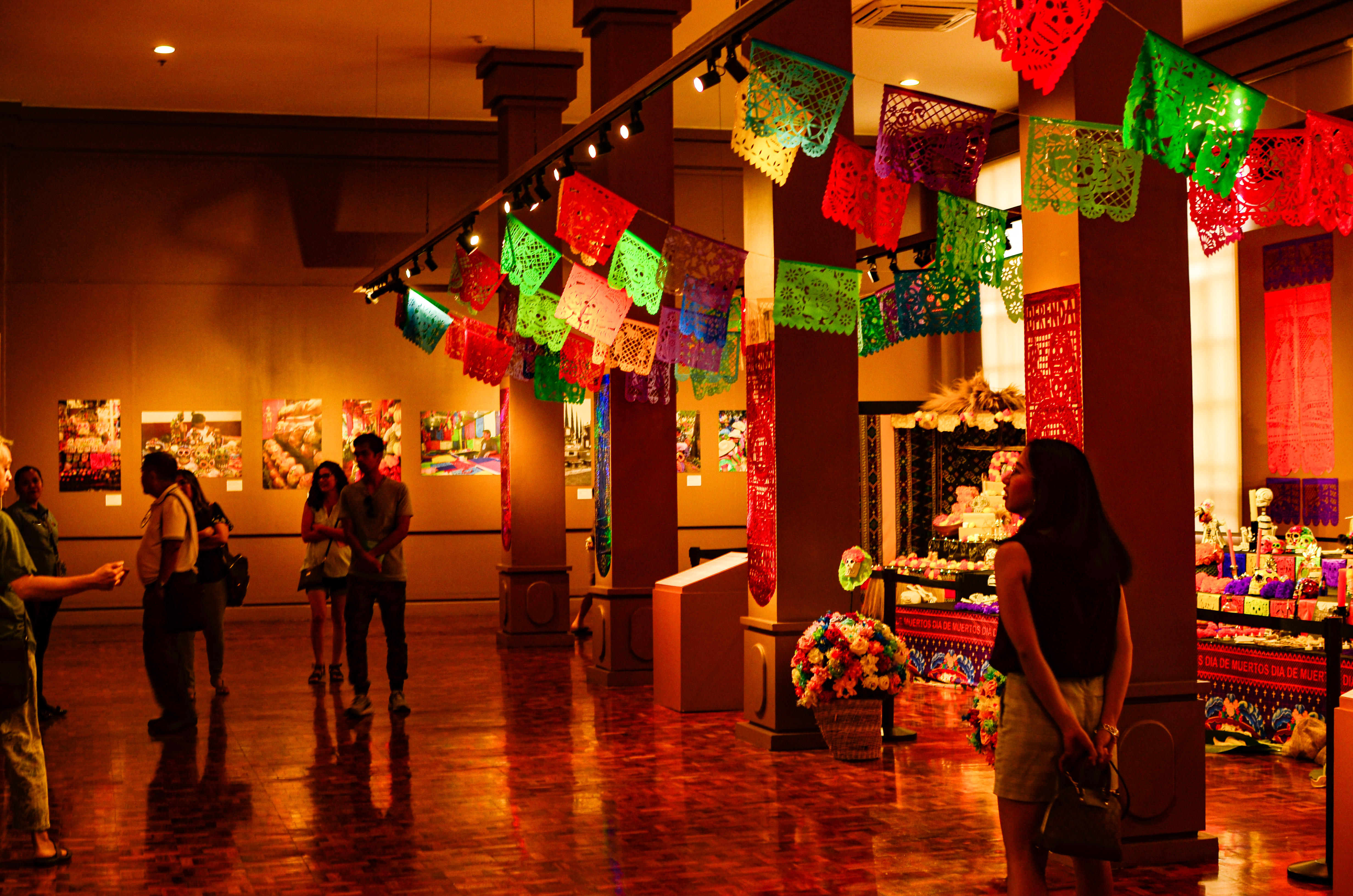
Día de los Muertos, which translates to Day of the Dead, is Mexico and the world’s living and intangible heritage. The celebration lasts from November 1 to 2. For the indigenous Mexicans, the souls are believed to go back to their homes during those days. Unlike the traditional all souls day, Dia de los Muertos is celebrated with music and colorful flowers, identical to a Philippine festival.
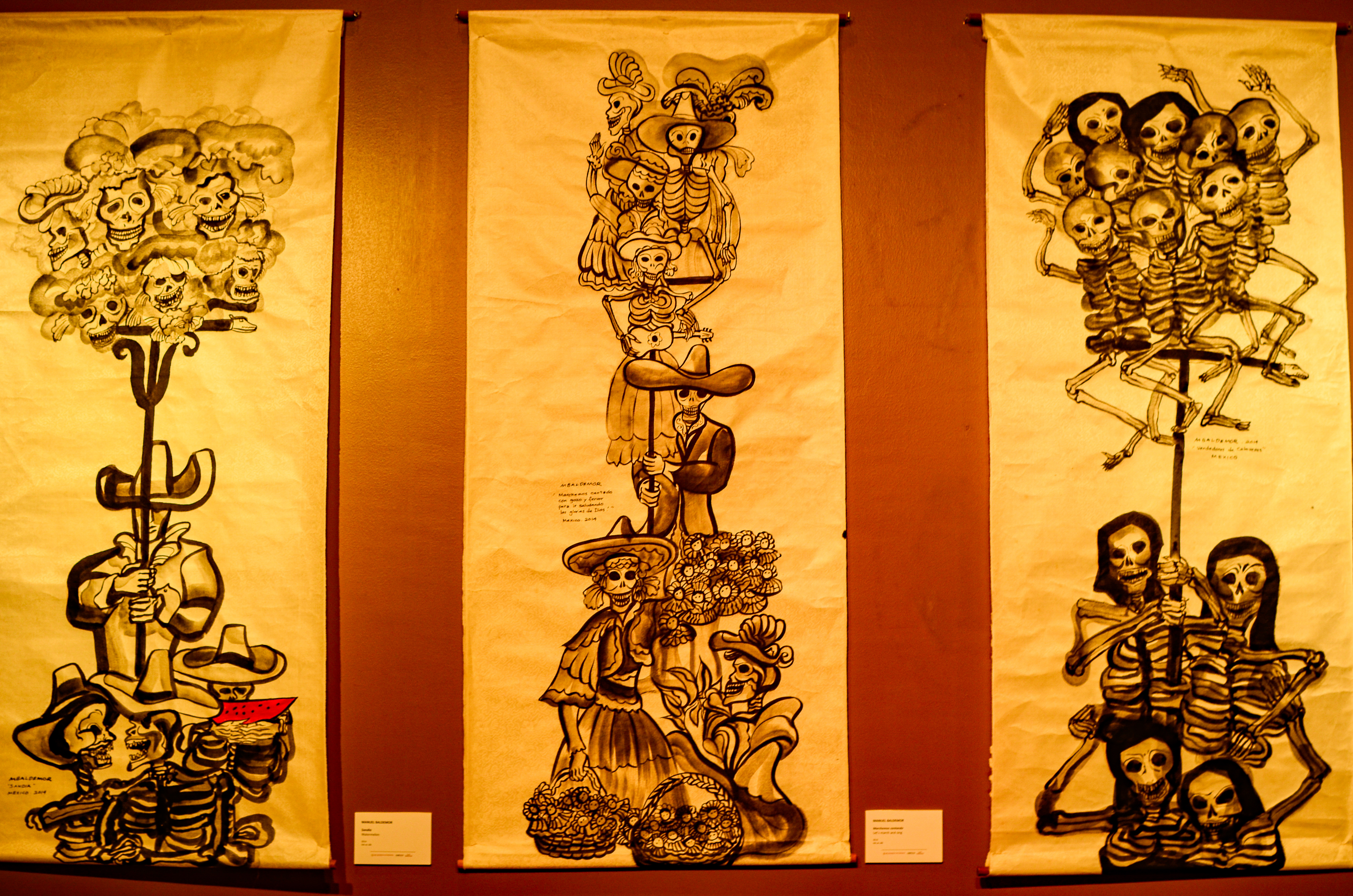
Marchemos Cantado (Let’s march and sing) — Manuel Baldemor (2014)
Ink on silk artwork, Baldemor chooses to center his work on singing praises to God. Skeletons bringing flowers and frolicking a guitar were depicted on silk. The work also has a written phrase “Marchemos cantado con gozo y fervor para ir saludando las glorias de Dios!” which directly translates to “Let us sing with joy and fervor to go greeting the glories of God”. Baldemor trajects the focus of the viewers to the festive ambiance of the celebration.
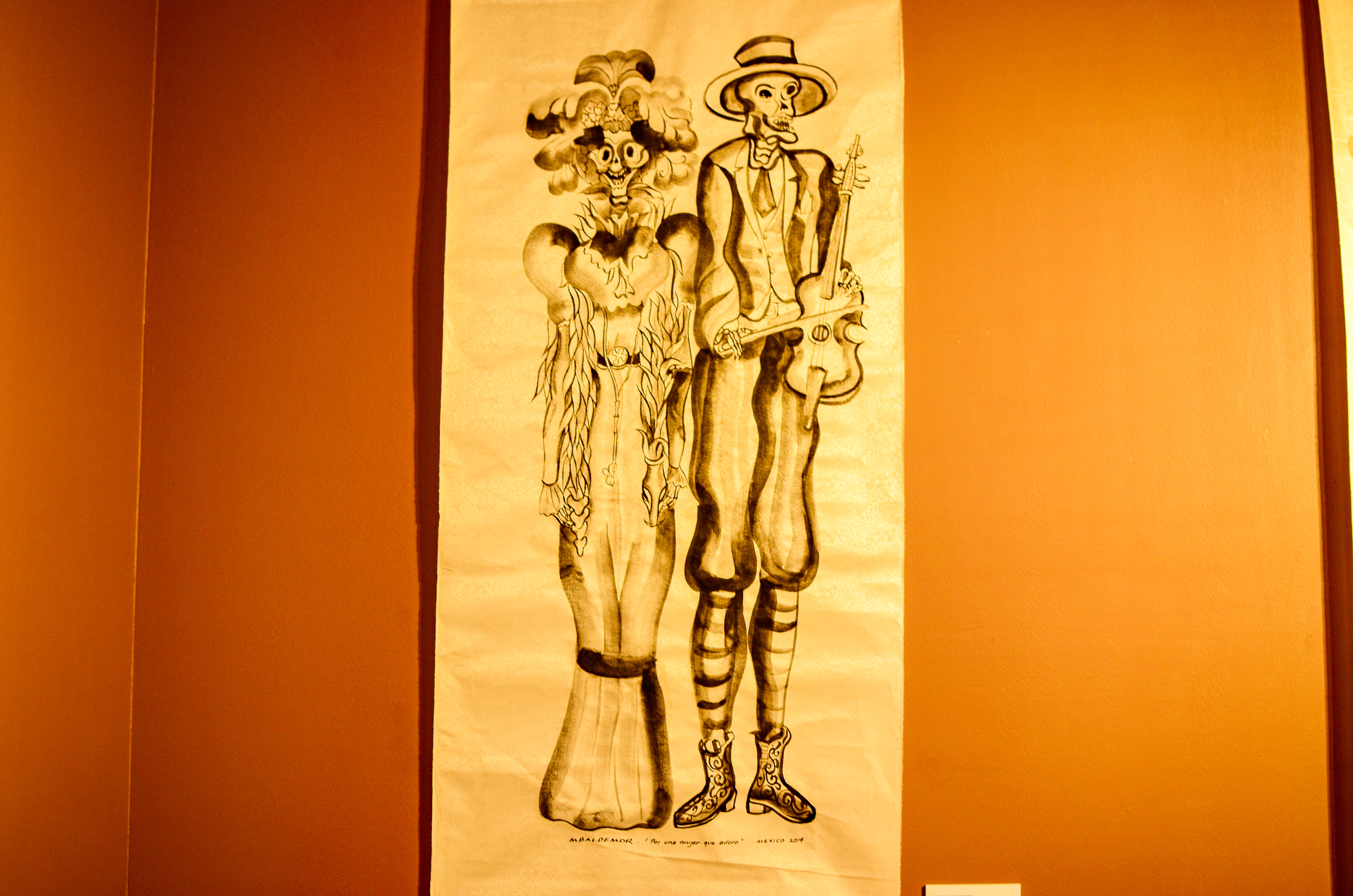
Por Una Mujer Que Adoro (For a woman I love) — Manuel Baldemor (2014)
Por Una Mujer Que Adoro is a song for the woman he loves and promised eternity with. Having to stand beside his special someone and enjoy his music made him feel more alive than mortals. Baldemor, unlike some of his ink on silk paintings, placed emphasis on the woman on the artwork. The couple wore extravagant clothes and were presented to be joyful.
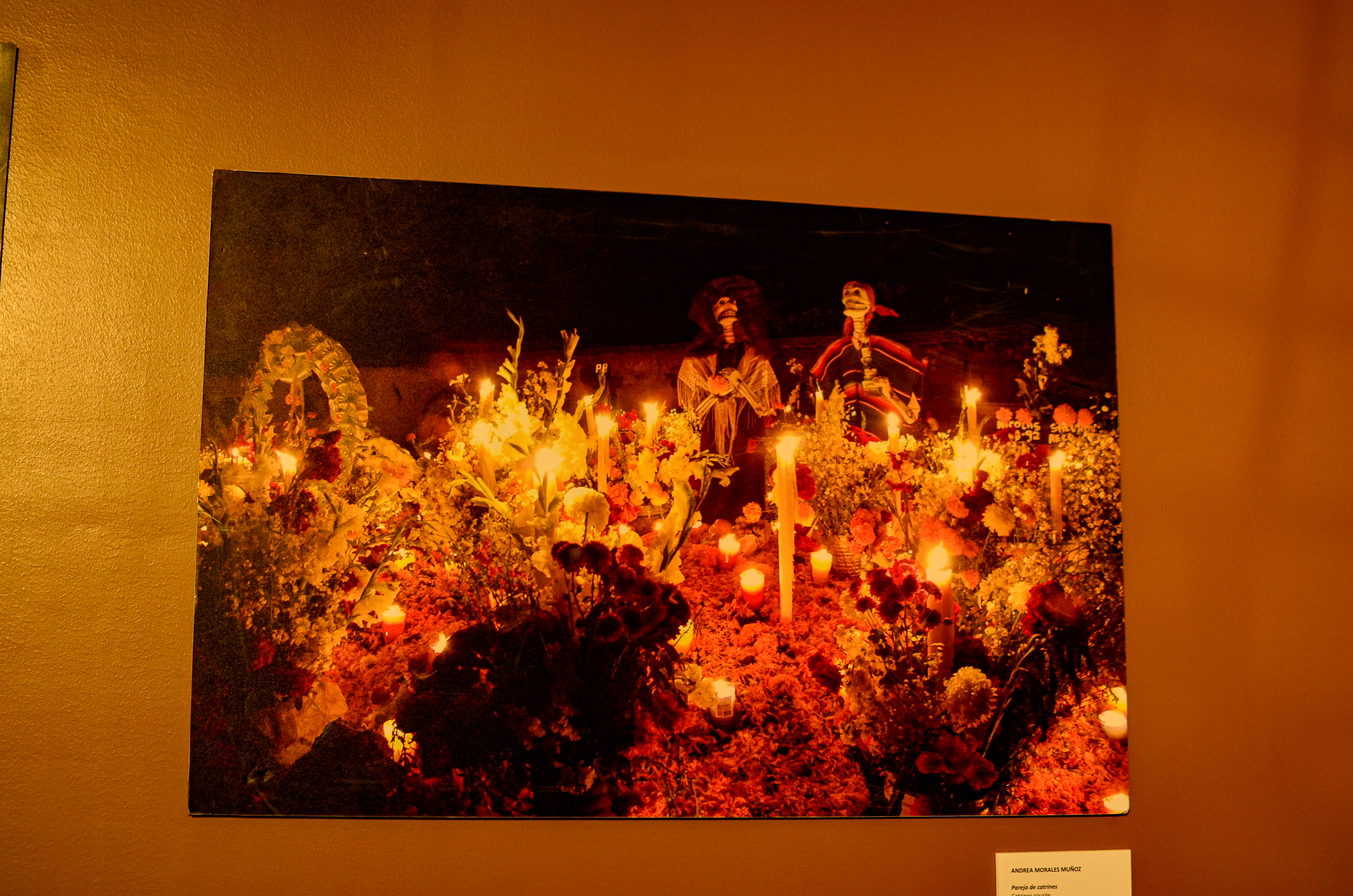
Pareja de catrines (Catrines couple) — Andrea Morales Muñoz (2008)
The photo bears two skeletons wearing Mexican clothes looking above the dusky touch of a November night, surrounded by a sea of candles and cempasúchil (flowers of the dead). Though skeletons are typically used as a tactic to scare in many horror-themed materials, Muñoz’s photo adds a layer of a romantic flavor to them, suggesting that the dead are seen as beautiful rather than scary.
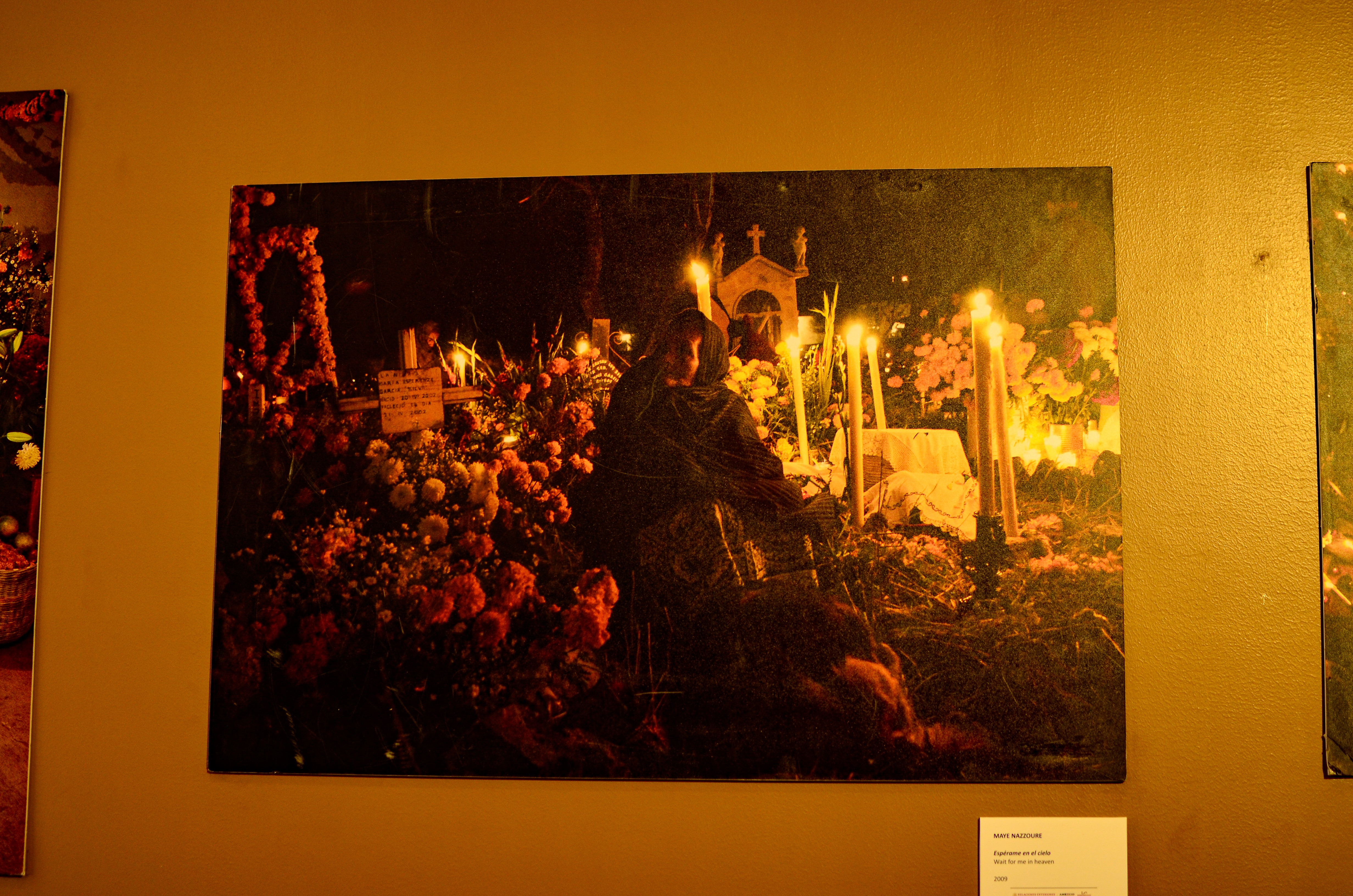
Espérame en el cielo (Wait for me in heaven) — Maye Nazzoure (2009)
The bond between loving spouses is an unbending one until the slow yet sudden arrival of death comes to finally sever it. Nazzoure’s photo shows an elderly woman wrapped in blankets as she sits by what seems to be the grave of her deceased husband, forming a melancholic face as she looks up in the sky, longing for her other half. The photo gives off a sad yet poignant message of love transcending even the unstoppable passage of death.
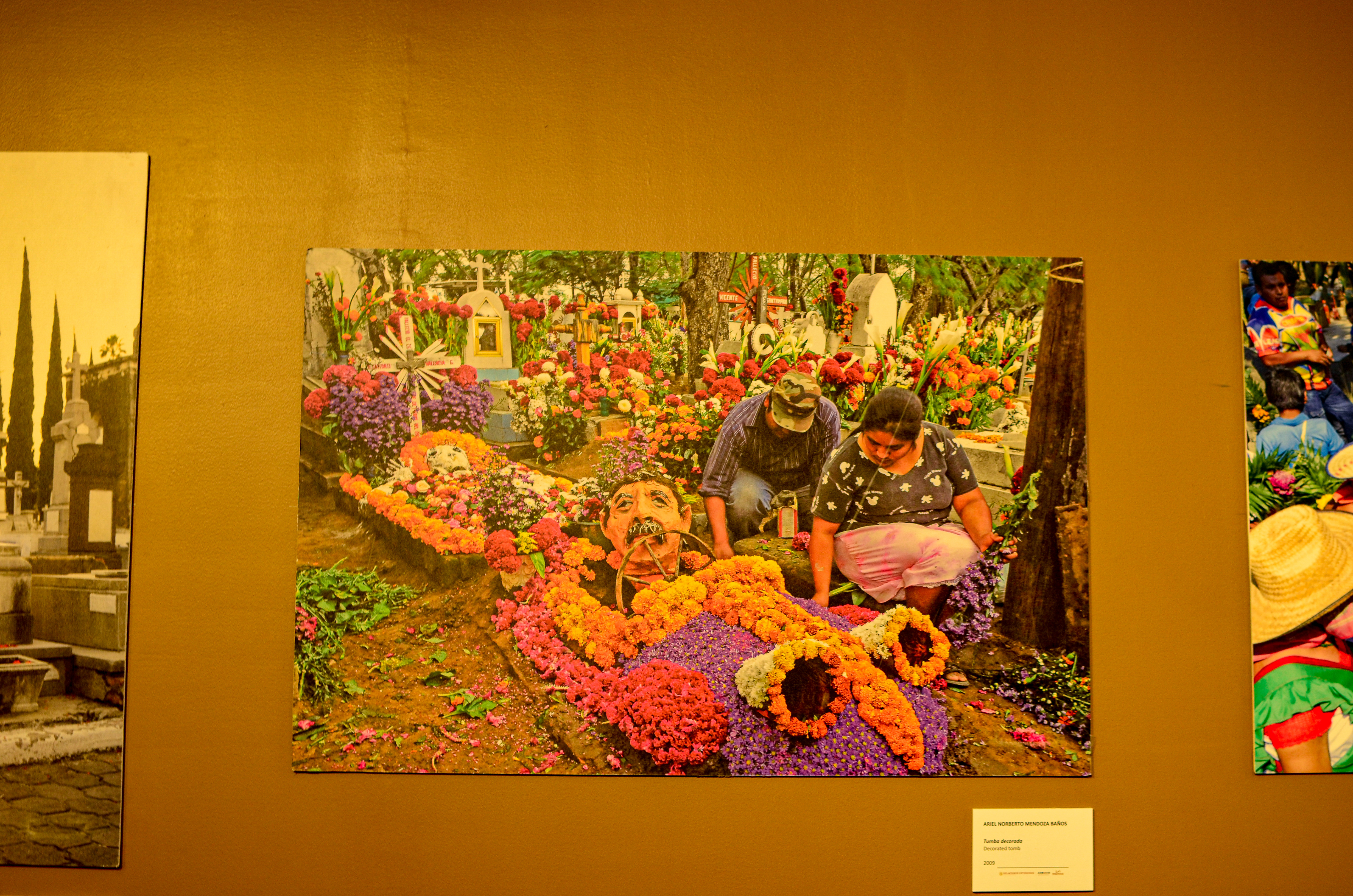
Tumba decorada (Decorated tomb) — Ariel Norberto Mendoza Baños (2009)
Part of what makes the celebration of Día de los Muertos special is its tradition of decorating the graves with cempasúchil, as it is said that the flowers’ colors and aroma guide the dead to the world of the living so they can celebrate with their loved ones. In the Philippines, Filipinos also practice a similar tradition by lighting up candles beside the graves and offering flowers as a sign of respect.

Pa’ Mi Altar (For my altar) — Nicolás Cárdenas Reyes (2010)
Pa’ Mi Altar centers on possibly a grandfather, who is unable to stand straight, still urges to go to the market to buy cempasúchil for his altar. Reyes exhibits the portrait in a way where the beauty of the cempasúchil makes the day of the dead beauteous. The grandfather, although old, pushed to seek cempasúchil for the altar. Reyes captured the photo at an angle where the beautiful cempasúchil and the emotions of the men are seen.
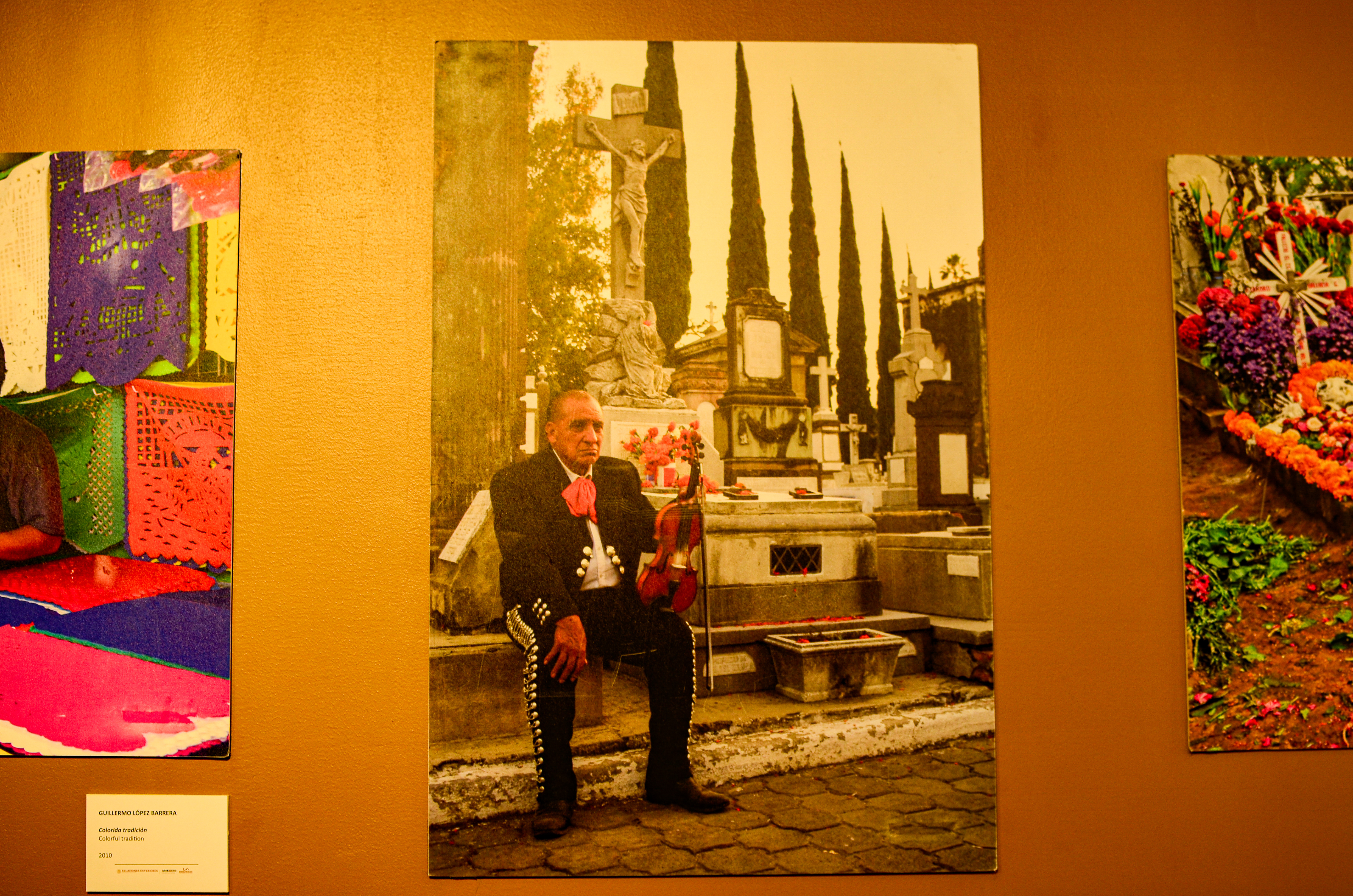
Nostalgia — Victor Hugo Casillas Romo (2011)
Nostalgia focuses on a man waiting for the sound of his violin to be heard by his love. The subject is restlessly sitting while holding his instrument as he obviously shows a crestfallen expression. Romo showcased the colors gray for the graves and orange for the cempasúchil, which indicates the way to this world for the dead. The photo, although obviously scripted, showed the natural longingness of man.
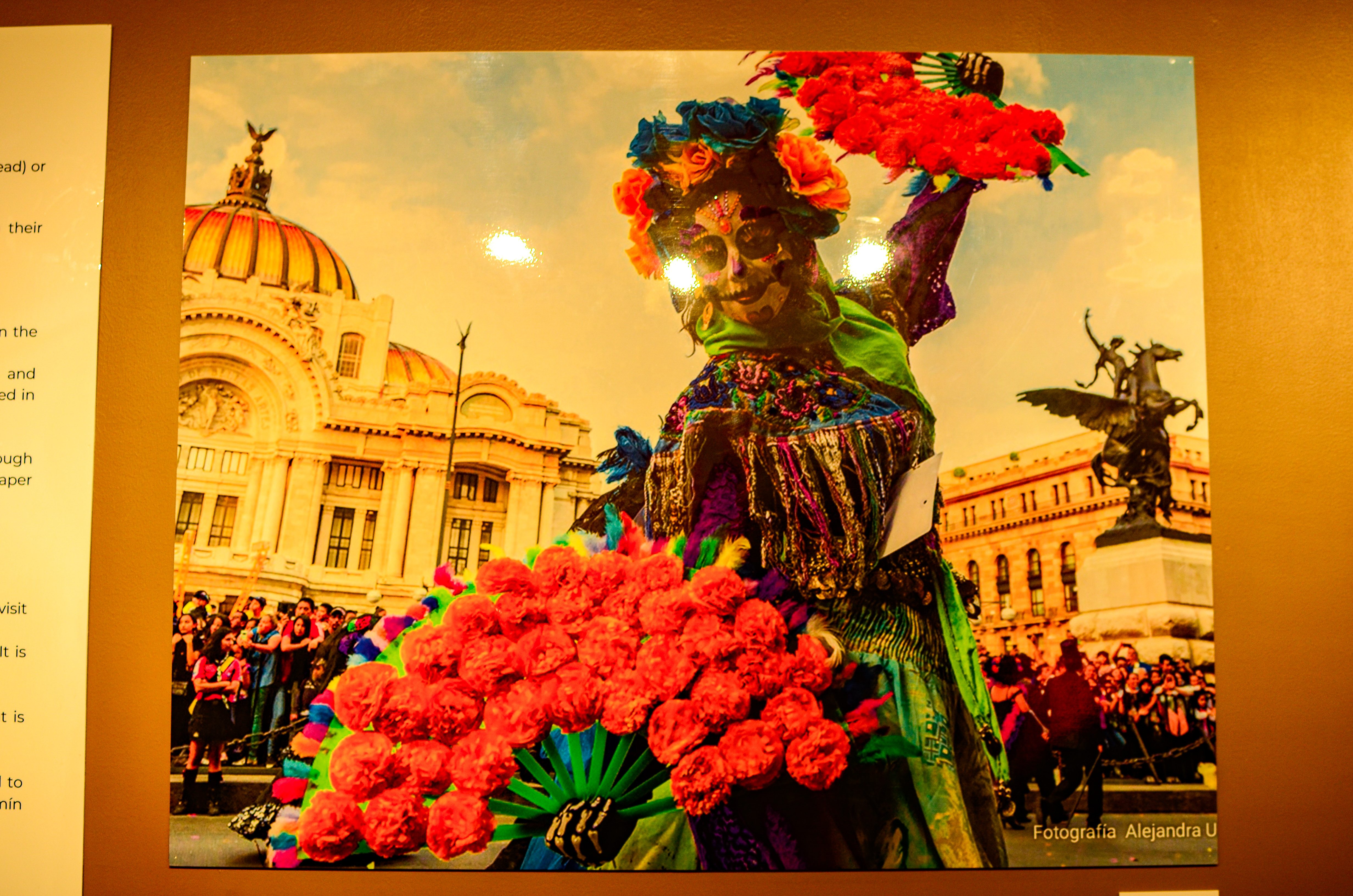
Desfile de Día de Muertos, Ciudad de México (Day of the Dead Parade, Mexico City) — Alejandra Uruiza Ocaranza (2010)
In contrast to the skeletons and graves void of life, Ocaranza’s photo embodies the colorful parade held during Día de los Muertos. A skull-faced woman clad in a lively dress dazzles the crowd with her large fans decorated with cempasúchil. The scene demonstrates that Día de los Muertos is not simply remembering those who have passed, but it is also a time for cheers, claps, and blooming smiles.
The exhibit incorporates the power of photography, painting, and a large, colorful layout of Mexican culture’s traditional ofrenda around the room. It is also showcasing sceneries of candlelit graves and flower-speckled cemeteries to help the audience experience what actually takes place during Día de los Muertos.F

